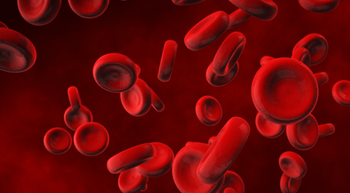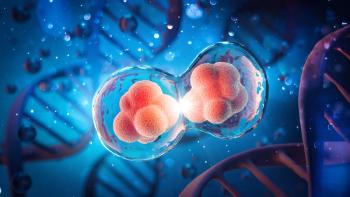
The Future of BRCA1/BRCA2 Testing
A pair of studies could change the way patients are evaluated for mutations of BRCA1 and BRCA2, two cancer susceptibility genes closely associated with breast and ovarian cancers, as well as other tumor types.
Ellen T. Matloff, MS, CGC
A pair of studies could change the way patients are evaluated for mutations of BRCA1 and BRCA2, two cancer susceptibility genes closely associated with breast and ovarian cancers, as well as other tumor types. From an inexpensive screening method, to extremely accurate next-generation sequencing, the methods described in the studies could allow more patients to be screened and sequenced with greater accuracy at a reduced cost.
Women who inherit harmful BRCA1 and BRCA2 mutations are five times more likely to develop breast cancer over the course of a lifetime, according to the National Cancer Institute. Additionally, women with these mutations are at higher risk of developing early-onset breast and ovarian cancer.
Currently, BRCA1 and BRCA2 mutations are identified through full gene sequencing. Although the existing method is relatively accurate when it comes to identifying mutations, it might not always be able to tell which mutations are actually harmful and could lead to the development of cancer.
Additionally, there are some important limitations with this existing method of sequencing, according to Ellen T. Matloff, MS, CGC, certified genetic counselor and Director of Cancer Genetic Counseling at Yale Cancer Center in New Haven, Connecticut.
“It’s time-consuming,” Matloff said. “It takes approximately three weeks for the results to come back. If you’re testing a newly diagnosed patient, that three weeks can delay any surgical decision-making.”
Matloff said that the cost of the current test is also a concern for many patients. Without insurance, the test costs approximately $4000 per patient, Matloff said.
In a new study published in the journal Cancer Prevention Research, researchers developed a new multiple gene expression profile test that was able to predict whether otherwise healthy women carried harmful BRCA1 or BRCA2 mutations.1
The researchers found that compared with cells from noncarriers, cells with mutations in one or two copies of BRCA1 or BRCA2 had a distinct gene expression profile when exposed to radiation or other causes of DNA damage. The finding could aid researchers in distinguishing healthy mutation carriers from noncarriers.
The researchers collected white blood cells from 9 healthy women with mutated BRCA1 and 8 healthy women with mutated BRCA2 and then exposed them to radiation. After the radiation exposure, the researchers extracted the total RNA from these cells and compared it to RNA that was obtained from white blood cells from 10 healthy noncarrier women that were also exposed to radiation.
The researchers identified approximately 1500 genes that were expressed differently between the BRCA1 and BRCA2 carriers and noncarriers. That list was narrowed down to 18 genes that were most significantly differentiated between the two groups. A validation study using 21 of the differentiated genes and 5 control genes to predict the risk for carrying a mutation was also performed. Finally, blood samples from an independent group of 40 women who were BRCA1 and/or BRCA2 carriers and 17 women who were noncarriers were analyzed. The researchers found that their model had a sensitivity of 95% and 88% specificity.
“This novel technology aims to provide a layer of information regarding the cell functionality aspect of BRCA mutations that could greatly enhance the doctor’s ability to identify high-risk carriers,” said Asher Y. Salmon, MD, a breast cancer specialist at the Hadassah Hebrew University Medical Center in Jerusalem, Israel, and lead author of the study, in a statement. “The current tool for mutation detection is gene sequencing, which is expensive, time-consuming and, in many cases, lacking clear and decisive clinical decision making information. In many cases, the current sequencing tool identifies a mutation, but we do not know if the mutation is neutral or harmful.”
A large validation study is being developed in Europe and North America to assess whether this method of screening is effective in a much larger and heterogeneous population of patients.
Matloff said that because the test is aimed at healthy carriers and noncarriers, she believes it has the potential to reach a wider population while providing very accurate results, and suggests that it could be used as a screening method.
In the second study, published in the European Journal of Human Genetics, researchers from the Catalan Institute of Oncology at the Bellvitge Biomedical Research Institute in Spain developed a comprehensive workflow using next-generation sequencing to improve genetic testing for BRCA1 and 2 mutations. The researchers wanted to find a method that was both cost-effective and utilized next-generation sequencing to improve sensitivity and specificity.2
Although existing methods of sequencing are effective, the researchers noted a couple of limitations. Both BRCA1 and BRCA2 are fairly large genes when it comes to sequencing, and there is a lack of mutation hot spots that are easily identified. They suggested that complementary techniques are required to identify large genomic rearrangements of these genes.
The researchers used the BRCA MASTR kit, a molecular diagnostic assay that identifies mutations in the coding regions of the BRCA1 and BRCA2 genes, followed by the small-scale GS Junior, a high-throughput sequencer that is available as a laboratory bench top system. Through a variety of validation analyses, the researchers determined that the algorithm had 100% sensitivity and specificity in the samples that were analyzed. Additionally, the algorithm is designed to eliminate false positives.
“This approach allows [us] to identify all point mutations and small deletions and insertions analyzed, even in regions of high technical difficulty, such as homopolymeric regions,” said Conxi Lázaro, PhD, a researcher at the Catalan Institute of Oncology at the Bellvitge Biomedical Research Institute who headed the study, in a statement.
Matloff said that while the algorithm requires further validation, the results of the study were encouraging.
“I don't know if this would be better than the existing methods, but I hope it will be,” Matloff said.
Currently, Myriad Genetics holds the patents on the BRCA1 and BRCA2 genes in the United States and also manufactures the only test currently available to identify the presence of mutations in those genes. These patents were the focus of an intense legal battle. In August, a federal appellate court ruled that Myriad could maintain the patent, stating that the isolated BRCA1 and BRCA2 genes are not found that way in nature and could therefore be patented. This may have an impact on the eventual commercial availability of these tests, Matloff said.
References
- Salmon AY, Salmon-Divon M, Zahavi T, et al. Determination of molecular markers for BRCA1 and BRCA2 heterozygosity using gene expression profiling [published online ahead of print January 22, 2013]. Cancer Prev Res. doi:10.1158/1940-6207.CAPR-12-0105.
- Feliubaladó L, Lopez-Doriga A, Castellagué E, et al. Next-generation sequencing meets genetic diagnostics: development of a comprehensive workflow for the analysis of BRCA1 and BRCA2 genes [published online ahead of print December 19, 2012]. Eur J Hum Genet. doi:0.1038/ejhg.2012.270.
Newsletter
Knowledge is power. Don’t miss the most recent breakthroughs in cancer care.






























































































